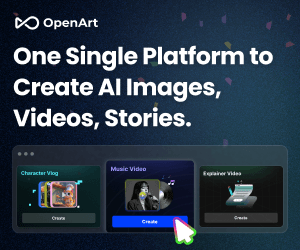The digital age has ushered in a wealth of opportunities, particularly for those seeking to share their knowledge and expertise with the world. One such opportunity lies in the creation of mini online courses.
These compact learning experiences are growing in popularity, offering a flexible and accessible way to educate and engage a targeted audience. If you're passionate about a particular subject and are looking to monetize your skills, starting a mini online course could be your ticket to success.
This comprehensive guide will walk you through the essential steps of creating, launching, and marketing your own mini online course. From choosing a profitable niche to delivering engaging content and promoting your course to the right audience, we'll equip you with the knowledge and strategies to turn your expertise into a thriving online business.
>>>Learn how to Create your course and sell it for up to $997 in the next 7 days<<<
<<<>>>Signup for systeme.io for free<<<>>>, a beginner-friendly platform for hosting courses and selling products. It is also best for email marketing and many more.
Choosing your niche
Finding the right niche is crucial for the success of your mini-online course. It’s about identifying a specific area of expertise that aligns with your passions and meets an existing market demand. This targeted approach allows you to focus your efforts and attract a dedicated audience eager to learn from you.
Identify your strengths and passions
Brainstorming your expertise: Take some time to reflect on your skills, knowledge, and experiences. What are you naturally good at? What subjects do you enjoy talking about or teaching others? Making a list of potential topics that spark your interest is a great starting point.
Matching your skills with market demand: While passion is vital, ensuring your chosen niche has a viable market is equally important. Research online forums, social media groups, and competitor offerings to gauge the level of interest and demand for your potential course topic.
Researching profitable online course niches
Analyzing current trends and popular topics: Keep an eye on emerging trends and popular topics within your field of interest. Browse online course platforms like Udemy, Coursera, and Skillshare to identify what’s currently selling well and what gaps exist in the market.
Evaluating competition and identifying gaps in the market: Analyze your potential competitors. What are they doing well? What could be improved upon? Identifying areas where you can offer a unique perspective, a more in-depth approach, or a specific skill set that sets you apart can be key to attracting students.
Validating your course idea
Conducting surveys and gathering feedback: Once you have a few potential niches in mind, consider conducting surveys or polls to gather feedback from your target audience. This will help you validate your course idea and understand if there’s genuine interest in what you have to offer.
Testing the waters with pre-selling strategies: Another effective strategy is to test your course idea by pre-selling it to a small group of early adopters. This not only validates your concept but also helps you generate initial revenue and gather valuable feedback before investing heavily in full-scale production.
Defining your target audience
Understanding your target audience is as crucial as choosing the right niche. It’s about identifying who your ideal student is and tailoring your course content to their specific needs and learning goals. The more you know about your audience, the better you can design a course that resonates with them and delivers real value.
Identifying your ideal student
Creating detailed buyer personas: Develop detailed buyer personas to represent your ideal students. Consider their demographics, interests, motivations, pain points, and learning preferences.
Understanding their learning goals and challenges: What are their aspirations? What challenges are they facing that your course can help them overcome? Clearly defining these aspects allows you to structure your content in a way that directly addresses their needs.
Tailoring your course content to their specific needs
Relevance and Value: Ensure your course content is highly relevant to your target audience's interests and goals. Tailor your examples, case studies, and assignments to resonate with their specific needs and aspirations.
Accessibility and Engagement: Consider your audience's learning preferences and design your content accordingly. Some may prefer video-based lessons, while others might favor text-based materials or interactive quizzes.
Creating high-quality content
The heart of any successful online course lies in its content. Creating high-quality, engaging, and informative content is crucial for delivering a valuable learning experience that keeps your students motivated and satisfied.
Structuring your mini-course
Developing a logical and easy-to-follow curriculum: Organize your course content into a clear and concise curriculum. Break down complex topics into manageable modules that build upon each other progressively.
Breaking down content into bite-sized modules: Keep your modules concise and focused to avoid overwhelming students with too much information at once. Each module should have a clear learning objective and deliver value in a digestible format.
Choosing the right format
Exploring various content types - video, audio, text: Experiment with different content formats to find what works best for your topic and target audience. Videos can be highly engaging, audio lectures offer flexibility for on-the-go learning, and text-based materials are ideal for detailed information and reference points.
Selecting the best format for your topic and audience: Consider your audience's learning preferences and the nature of your content when selecting the most appropriate format. Some topics lend themselves better to visual demonstrations, while others might be more effectively communicated through written explanations.
Designing engaging learning experiences
Incorporating interactive elements - quizzes, assignments: Incorporate quizzes, assignments, and interactive exercises to reinforce learning and keep students actively engaged. These elements help test their understanding and provide practical application of the concepts taught.
Encouraging community interaction through discussion forums: Foster a sense of community by incorporating discussion forums where students can interact with each other, ask questions, and share insights. This creates a collaborative learning environment that enhances the overall learning experience.
Pricing and packaging your mini-course
Determining the right pricing for your mini online course is crucial for attracting students and maximizing your revenue potential. It involves finding a balance between providing value to your students and ensuring a fair return on your investment of time and effort.
Researching competitor pricing strategies
Analyzing Pricing Models: Explore how your competitors are pricing their courses, considering factors like content length, expertise level, and target audience. This provides a benchmark for setting your own prices and helps you understand the market expectations.
Determining the value of your course
Considering factors like content length, expertise, and results promised: Evaluate your course's unique value proposition. The length and depth of your content, your expertise level, the results you promise to deliver, and the perceived value your target audience places on your knowledge are key factors to consider.
Choosing the right pricing model
Exploring options like one-time purchase, subscription, or tiered pricing: Experiment with different pricing models to find the best fit for your course. A one-time purchase offers simplicity, a subscription model generates recurring revenue, and tiered pricing offers various options at different price points to cater to a wider range of students.
Selecting your online course platform
Choosing the right online course platform is crucial for delivering your content effectively, managing your students, and ensuring a smooth learning experience.
Evaluating popular platforms like Thinkific, Teachable, and Podia
Comparing features, pricing, and ease of use: Research popular online course platforms and compare their features, pricing plans, and ease of use. Consider factors like website customization options, payment processing integration, marketing tools, and customer support.
Choosing the platform that best suits your needs and budget
Scalability and Flexibility: Choose a platform that offers scalability, allowing you to expand your course offerings and student base as your business grows. Flexibility in terms of customization and integration with other tools you use is also essential.
Marketing and launching your mini-course
Once your course is ready, it’s time to launch it into the world and attract eager students. Effective marketing is key to reaching your target audience and generating enrollment.
Building your online presence
Creating a website or landing page to promote your course: Establish a strong online presence by creating a website or dedicated landing page to showcase your course. Highlight the key benefits, learning outcomes, and your unique expertise to entice potential students.
Leveraging social media
Engaging with potential students on relevant platforms: Leverage social media platforms like Facebook, Instagram, Twitter, and LinkedIn to connect with potential students. Share valuable content related to your course topic, engage in conversations, and run targeted ads to reach a wider audience.
Utilizing paid advertising to reach a wider audience: Consider investing in paid advertising campaigns on social media platforms or search engines to reach a broader audience. Target your ads based on demographics, interests, and online behavior to ensure your message reaches the most relevant individuals.
Email marketing
Building an email list and nurturing relationships: Start building your email list early on by offering valuable content upgrades or free resources in exchange for email subscriptions. Nurture these relationships by sending regular newsletters with valuable insights and updates.
Sending targeted campaigns to promote your mini-course: Utilize your email list to send targeted email campaigns promoting your mini-course. Segment your audience based on their interests and engagement level to ensure your messages resonate with them.
FAQ
1. How long should a mini online course be?
A mini online course typically ranges from 1 to 4 hours of content. This bite-sized format makes it more accessible and manageable for students who prefer shorter, more focused learning experiences.
2. What equipment do I need to create a mini online course?
The equipment you need will depend on your chosen content format. At a minimum, you'll need a computer, a reliable internet connection, and a microphone for recording audio. If you plan to create video lessons, you'll also need a webcam and possibly some basic lighting equipment.
3. How do I choose the right online course platform for my mini-course?
Consider factors like pricing, ease of use, features, and customer support when choosing a platform. Explore popular options like Thinkific, Teachable, and Podia and compare their offerings to find the best fit for your needs and budget.
4. How do I market my mini online course effectively?
Leverage social media, email marketing, and paid advertising to reach your target audience. Create valuable content that showcases your expertise, build relationships with potential students, and highlight the unique benefits of your course.
5. What are some tips for creating engaging mini-online course content?
Incorporate interactive elements like quizzes and assignments, vary your content format with video, audio, and text, break down information into bite-sized modules, and encourage community interaction through discussion forums.
Read More
How Do I Make My Own Online Course?
How do I Start an Online Course for Beginners?
Which Course is Best for Start your own Business?
How do I Establish Myself as a Coach?
Start a Successful Coaching Business
Best Small Business Courses Online
Online Business Courses for Entrepreneurs
LATEST BLOG POSTS
© businesshub360.systeme.io
All rights reserved



